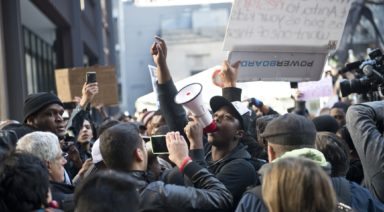Professor Finds $21 Trillion Missing from Government Budget

A Michigan State University economics professor discovered $21 trillion unaccounted for in the federal budget starting in 1998 until the end of fiscal year 2015. Professor Mark Skidmore enlisted the help of his graduate students to examine government documents from the Department of Defense and Housing and Urban Development to uncover an unfathomable amount of unauthorized spending.
According to the Constitution, all federal spending must be voted on and authorized by Congress each fiscal year. Any discrepancies found in the way of unauthorized spending would normally elicit a congressional hearing and investigation.
Skidmore and his students’ analysis used publicly available government documents from the two agencies’ websites to expose this inconsistency. Shortly after Skidmore published his findings, both agencies removed those documents from public access.
While no congressional committee tied to the budget had signaled the would open an inquiry prior to Skidmore’s findings, the Department of Defense allowed a first ever department-wide audit by independent firm Ernst & Young.
Skidmore says that sometimes there can be discrepancies meant to account for inadequate transactions, but those adjustments are usually no more than 1 percent of the total budget.
The Army’s annual budget for FY 2015 was $122 billion, meaning that an adjustment for inadequate transactions might be around $1.2 billion. The Army’s actual adjustments for FY 2015 were $6.5 trillion – 54 times what it was authorized to spend.

Out of thousands of documents spanning that period, Skidmore was able to find Army budget documentation for 13 of those years, saying its budget represented roughly $11.5 trillion of the missing $21 trillion. He also called these accounting documents “opaque,” saying it was not clear what the unauthorized adjustments were for.
That amount of unauthorized, “missing” money is equivalent to about $65,000 for every person in America. The government estimated that the federal deficit sits at around $20 trillion, an entire $1 trillion less than what Skidmore found missing in these adjustments.
So, what exactly is this money going towards? The revelation of a $56 billion Pentagon black budget for secret military, space, and surveillance programs has led some to speculate that it could be merely a fraction of what’s actually being spent.
Skidmore said he reached out to the Office of Inspector General, the Government Accountability Office, and Congressional Budget Office, asking if maybe the $6.5 trillion figure was a mistake and was instead supposed to be $6.5 billion. It was confirmed that $6.5 trillion was the correct adjustment. Though, when he asked if any of these agencies were alarmed or considering this a red flag, his questions were met with slight confusion and little concern.
Though Skidmore has reserved his speculation as to what he thinks the money might be going toward, it’s clear that either someone knows that a large amount of taxpayer dollars is being spent without authorized permission, or the accounting practices of those in charge of massive amounts of public money are that flawed.
Corporations Are Testing Ways to Advertise to Us in Our Dreams

Every day we are under a constant barrage of advertising, as some estimates say the average person can see up to 10,000 ads in a day. Now, are the advertisers coming for our dreams?
Henry David Thoreau once wrote, “[D]reams are the touchstone of our characters.” But for some companies, dreams might be the touchstone for advertising their products.
According to theHUSTLE.com, companies like Molson-Coors are conducting experiments to infiltrate your subconscious and make you dream about their products. Last year, volunteers were reportedly asked to watch this strange, trippy video laden with Coors imagery.
The volunteers then went to sleep while listening to audio from the video. Coors wanted to, “shape and compel” the subconscious to dream about their products, and apparently, it worked.
About 30 percent of the participants reported Coors in their dreams. One woman told theHUSTLE she had a series of “weird Coors dreams.” Later she said they were brought into a focus group where she said, “We all felt like lab rats… it just didn’t really sit right.”




































